The 1952 Franklin half dollar’s value ranges from $13 for circulated coins to over $100 for uncirculated specimens, depending on mint mark and condition. The 1952-S (San Francisco) is most valuable at ~$108 in brilliant uncirculated condition, while 1952-D (Denver) and 1952-P (Philadelphia, no mint mark) are worth ~$31-$33. Key value factors include error coins like repunched mint marks and off-center strikes, Full Bell Lines (FBL) feature, and higher grades (MS-66+). All 1952 half dollars contain 90% silver. The mint mark appears above the Liberty Bell on the coin’s reverse side.
The 1952 Franklin half dollar sitting in your drawer might be worth more than its silver content suggests. While most circulated examples trade near melt value, specific mint marks, pristine conditions, and rare errors can push values from $13 to over $2,000. Understanding what separates a common coin from a collector’s prize requires examining three critical factors: where it was minted, its state of preservation, and whether it carries any striking anomalies.
Understanding the Three 1952 Mint Varieties
The United States Mint produced Franklin half dollars at three facilities in 1952, each leaving a distinctive mark that significantly impacts value today.
Philadelphia struck 21,274,073 half dollars without any mint mark. These coins show Franklin’s profile on the obverse and the Liberty Bell on the reverse, with no letter designation. Denver produced 25,395,600 pieces marked with a small “D” above the bell on the reverse side. San Francisco minted just 5,526,000 coins, the lowest production figure of the year, identified by an “S” in the same location.
The mint mark location sits directly above the Liberty Bell’s yoke on the reverse. Check this spot carefully with adequate lighting, as worn coins sometimes make the letter difficult to identify. The San Francisco issue commands premium prices specifically because of its lower mintage, particularly in uncirculated grades where fewer examples survived.
What Each Version Is Actually Worth
Base values for circulated 1952 half dollars start around $13 regardless of mint mark when graded Very Fine (VF-20), primarily reflecting the 90% silver content weighing 12.5 grams per coin. The melt value alone provides a price floor that fluctuates with silver markets.
The real differences emerge in uncirculated condition:
Grade and Mint Mark Values:
| Mint Mark | Grade | Value Range |
|---|---|---|
| None (Philadelphia) | VF-20 | $13 |
| None (Philadelphia) | MS-63 | $33-$38 |
| None (Philadelphia) | MS-65 | $75-$95 |
| D (Denver) | VF-20 | $13 |
| D (Denver) | MS-63 | $31-$35 |
| D (Denver) | MS-65 | $68-$85 |
| S (San Francisco) | VF-20 | $13 |
| S (San Francisco) | MS-63 | $108-$125 |
| S (San Francisco) | MS-65 | $425-$550 |
The 1952-S shows dramatic value increases in Mint State grades. A common MS-63 example brings $108, while MS-65 specimens command $425 or more. Philadelphia and Denver issues follow similar pricing patterns to each other, with Philadelphia coins typically worth $2-$5 more at equivalent grades.
Professional grading matters significantly at these levels. A coin you believe is MS-65 might grade MS-63 or MS-64, cutting the value substantially. The difference between AU-58 (About Uncirculated) at $18 and MS-60 at $28 often comes down to subtle wear on Franklin’s cheekbone and the bell’s horizontal lines.
The Full Bell Lines Premium
Franklin half dollars feature unique grading criteria beyond standard numerical grades. The Full Bell Lines designation (FBL) identifies coins showing complete, unbroken horizontal lines across the Liberty Bell’s lower portion on the reverse.
Most 1952 half dollars, even in uncirculated condition, show weakness in these bell lines due to die spacing and strike pressure. The Philadelphia Mint particularly struggled with achieving full strikes. When authentication services like PCGS or NGC designate a coin as FBL, values multiply significantly.
A 1952 Philadelphia half dollar in MS-65 without FBL sells for approximately $85. The same coin with Full Bell Lines designation reaches $650-$800. The 1952-S in MS-65 FBL can exceed $2,200 at auction, representing a 400% increase over non-FBL examples.
Examining your coin requires strong magnification and proper lighting. The bell lines should be continuous, sharp, and fully separated across the entire lower section. Even slight weakness in one line disqualifies FBL status. Approximately 5-8% of uncirculated Franklin halves meet this standard, making it a genuinely rare feature rather than a common occurrence.
Error Coins Worth Hunting
Manufacturing errors from 1952 create some of the most valuable varieties in the Franklin series. Understanding what to look for requires examining specific types of minting mistakes.
Repunched Mint Marks (RPM) occur when the mint mark punch strikes twice in slightly different positions. The 1952-S/S varieties show clear doubling of the “S” above the Liberty Bell. Three distinct varieties exist, with the strongest doubling (S/S West) showing the secondary “S” clearly visible to the left of the primary mark. These varieties add $75-$150 to base values in circulated grades and $200-$400 in uncirculated condition.
Die Cracks and Cuds appear when worn dies develop breaks that transfer raised lines or lumps onto struck coins. A significant die cud on a 1952 half dollar, particularly if it affects major design elements, can add $50-$300 depending on size and location. The most valuable cuds interrupt Franklin’s profile or the Liberty Bell image.
Off-Center Strikes happen when the planchet (blank coin) feeds incorrectly into the striking chamber. An off-center strike showing 5-10% of the design missing with a visible blank area typically brings $100-$250. Strikes showing 25-50% off-center while retaining a full date can reach $500-$800. Examples more than 50% off-center, though dramatic, often lose numismatic value if the date becomes illegible.
Double Die Errors on 1952 half dollars are rare but documented. Doubling in Franklin’s eye, the date, or “LIBERTY” lettering adds significant premiums. A strong double die obverse in uncirculated condition can command $800-$1,500, though authentication is essential as circulation wear can mimic doubling effects.
Heritage Auctions sold a 1952 Philadelphia half dollar with a major die crack through Franklin’s head for $385 in 2022, while a 1952-S with 15% off-center strike brought $625 in the same auction period. Error values fluctuate based on visual appeal and how dramatically they differ from normal strikes.
Grading Your Coin Accurately
Determining precise grade separates accurate valuation from wishful thinking. Franklin half dollars show wear in predictable patterns that help identify grade levels.
Circulated Grades:
- Good (G-4): Heavy wear flattens most details. Franklin’s hair shows as an outline only. Bell lines are completely worn away. Worth approximately $11-$12.
- Very Fine (VF-20): Moderate wear with about half the original detail remaining. Franklin’s hair shows distinct separation but worn flat on the highest points. Some bell lines visible but incomplete. Worth $13-$15.
- Extremely Fine (EF-40): Light wear on highest points only. Franklin’s hair retains 75% of detail. Bell lines mostly visible but may show slight flatness. Worth $16-$22.
- About Uncirculated (AU-50/AU-58): Slight wear on cheekbone and hair above Franklin’s ear. Bell lines sharp but may show minor friction. Worth $18-$26.
Uncirculated Grades:
- MS-60 to MS-62: No wear but noticeable bag marks and scuffs from handling. Luster may be dull or uneven. Worth $28-$30 (Philadelphia/Denver) or $85-$95 (San Francisco).
- MS-63 to MS-64: Moderate contact marks visible but not distracting. Good luster with minor interruptions. The most common uncirculated grade range.
- MS-65 and higher: Minimal contact marks requiring magnification to see. Strong, even luster. Commands significant premiums, particularly for San Francisco issues.
Check Franklin’s cheekbone and the hair directly above his ear first—these areas show friction before anywhere else. On the reverse, examine the horizontal bell lines and the eagle’s breast feathers for wear indicators.
Where to Sell for Maximum Return
Understanding your coin’s value means little without knowing where to realize that value. Different selling venues suit different coin qualities and collector experience levels.
Local coin shops offer immediate payment but typically pay 60-75% of retail value. They work well for common circulated pieces worth $13-$30 where convenience matters more than maximizing return. Shops need profit margin for overhead and inventory risk.
Online marketplaces like eBay reach broader audiences but require photography skills, accurate descriptions, and managing shipping logistics. Expect to net 85-92% of value after fees (around 13% for eBay/PayPal combined). This venue suits coins in the $50-$300 range where auction houses won’t accept consignments.
Professional auction houses including Heritage, Stack’s Bowers, and Great Collections handle high-grade and error coins best. They charge 10-20% consignment fees but reach serious collectors willing to pay full market value. Minimum values typically start around $500, making this route ideal for 1952-S coins in MS-65 or better, FBL examples, or significant error pieces.
Certified coins sell for 10-15% more than raw coins in equivalent condition because third-party grading removes uncertainty. PCGS and NGC grading costs $20-$50 depending on service level and declared value. Submit coins only when the potential value increase exceeds grading costs plus shipping—generally worthwhile for any 1952-S in apparent MS-64 or better condition, or any mint mark showing possible FBL characteristics.
Before selling, research recent auction results for comparable coins. The PCGS CoinFacts database and Heritage Auctions archives provide free access to actual sale prices, giving realistic expectations beyond price guide estimates that may lag current market conditions.
Authentication Steps for Valuable Varieties
Confirming authenticity and variety identification protects against costly mistakes in both buying and selling. Several verification methods help ensure accurate attribution.
Weight and dimensions provide the first authentication check. Genuine 1952 Franklin half dollars weigh 12.5 grams with a diameter of 30.6mm and thickness of 2.15mm. Counterfeits often miss these specifications. A digital scale accurate to 0.1 grams costs under $20 and eliminates obvious fakes.
Magnet testing quickly identifies wrong metal composition. Silver is non-magnetic. If your coin attracts a magnet, it’s either a counterfeit or a damaged piece that’s been plated. This simple test catches common fakes made from magnetic alloys.
Variety attribution for repunched mint marks requires 10x magnification minimum. Compare your coin’s mint mark directly to images in the Cherrypickers’ Guide or Variety Vista website. The mint mark on genuine RPM varieties shows distinct, separate impressions rather than mechanical doubling from die deterioration.
Professional authentication through PCGS or NGC costs $20-$50 but proves essential for coins valued above $200. Their certification not only confirms authenticity but also locks in the grade and variety, making the coin significantly easier to sell at full value. A $2,000 claimed value becomes realistic only with certification backing it.
Suspicious signs include wrong font styles in lettering, incorrect edge reeding (150 reeds on genuine pieces), or color inconsistent with 90% silver composition. When doubt exists about a potentially valuable error or high-grade coin, the certification fee represents insurance against expensive mistakes.
How Silver Content Affects Your Base Value
Every 1952 Franklin half dollar contains 0.36169 troy ounces of pure silver. This precious metal content establishes a minimum value floor that fluctuates with commodity markets.
At $24 per ounce silver spot price, the melt value equals approximately $8.68. Current prices around $30 per ounce push melt value to $10.85. Dealers typically pay slightly below melt value for common circulated pieces to cover refining costs and profit margins—expect offers around $10-$11 for worn examples regardless of mint mark.
This silver floor means your coin will never be worthless. Even heavily worn pieces retain intrinsic value. However, the melt value floor also means significant value exists only in better grades, scarcer mint marks, or error varieties. A worn 1952-D trading at $11 offers little room for appreciation beyond silver price movements.
Understanding this relationship helps set realistic expectations. If silver drops to $20 per ounce, that common circulated half dollar worth $13 today might bring only $9-$10. Conversely, an uncirculated 1952-S worth $108 derives most value from numismatic demand rather than metal content—silver price changes affect it proportionally less.
Making Your 1952 Half Dollar Decision
Start by identifying your coin’s mint mark using adequate lighting and magnification. The letter above the Liberty Bell on the reverse tells you immediately whether you hold a common Denver or Philadelphia issue, or the scarcer San Francisco piece worth examining more closely.
Assess condition honestly by comparing wear patterns against grading standards. Most coins found in circulation grade VF-20 to EF-40, placing value around $13-$18. If your coin shows no wear and strong luster, investigation becomes worthwhile—particularly for San Francisco issues where uncirculated examples command substantial premiums.
Check for Full Bell Lines if the coin appears uncirculated. This single feature can multiply value five to ten times. Examine the mint mark for repunching using magnification, and scan surfaces for die cracks, cuds, or off-center characteristics. These error varieties add value across all grade levels.
For coins appearing to grade MS-64 or better, or any piece with FBL characteristics or significant errors, professional grading certification pays for itself through increased marketability and realized prices. The $35 grading fee becomes insignificant against a $400-$2,000 value.
Your 1952 Franklin half dollar might be pocket change worth its silver content, or it could represent a significant numismatic find. The difference lies in those three specific factors: where it was minted, how well it survived, and what minting anomalies it carries. With careful examination and realistic grading, you’ll know exactly which category your coin occupies.
You may be interested:
- 1859 Indian Head Penny Coin Value Complete Errors List And No Mint Mark Worth Guide For Collectors
- 1911 V Nickel Coin Value Guide Complete Errors List And No Mint Mark Worth Today
- 1902 Dime Coin Value Complete Errors List With O S And No Mint Mark Worth Guide
- 1788 Quarter Coin Value Complete Guide Errors List And D S P Mint Mark Worth Revealed
- 1776 To 1976 Bicentennial Half Dollar Coin Value Complete Errors List And What Your D S And No Mint Mark Coins Are Actually Worth
- 1990 Penny Coin Value Errors List How D S And No Mint Mark Pennies Are Worth Thousands Of Dollars

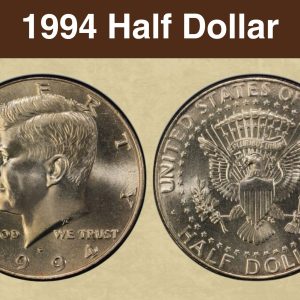
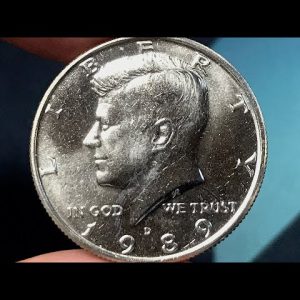
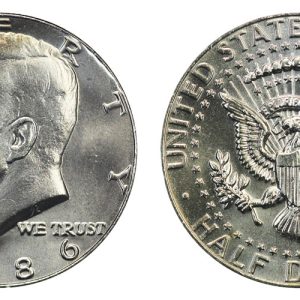
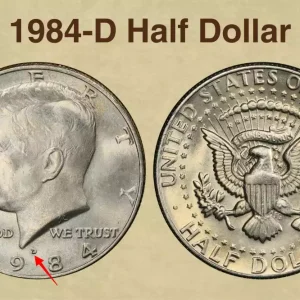
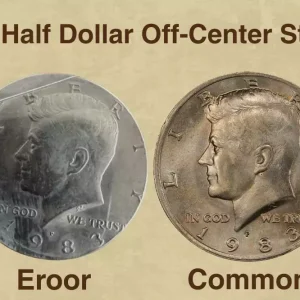
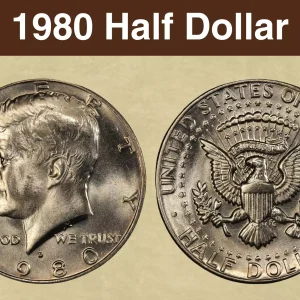
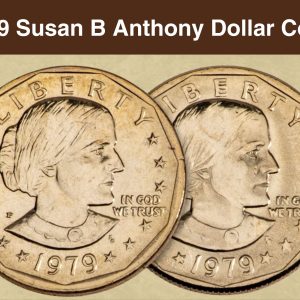
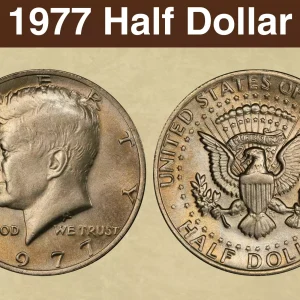
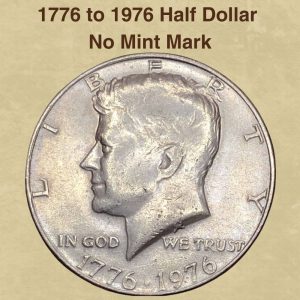
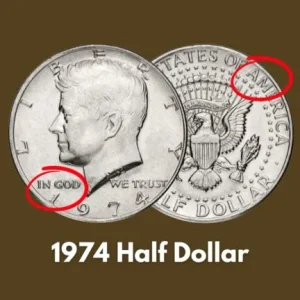
What makes a 1952 half dollar rare?
The highest recorded 1952 Franklin Half Dollar value at auction can exceed several thousand dollars for coins in top condition (MS-66 or higher) with full bell lines (FBL) on the Liberty Bell’s design. Rare errors or particularly stunning eye appeal can also enhance the auction value.
What is the hardest Franklin half dollar to find?
The early proof issues from 1950-1954 represent the most valuable regular-issue Franklin half dollars, with the 1950 proof commanding over $500 in Proof-65 condition. The low mintages—especially the 1950 proof with only 51,386 pieces—make these coins genuinely scarce.
How much is a 1952 half dollar worth today?
A 1952 half dollar, a Franklin Half Dollar, is worth approximately $9 to $12 in circulated condition, while uncirculated examples can range from $20 to $400 or more, depending on the mint mark and the presence of Full Bell Lines (FBL). For example, a 1952-S Franklin Half Dollar in uncirculated condition with Full Bell Lines can be worth $100-$400, according to Bullion Shark.
Where is the mint mark on a 1952 Franklin half dollar?
On a 1952 Franklin Half Dollar, the mint mark is located on the reverse (back) side of the coin, above the Liberty Bell and below the word “STATES”. Philadelphia coins have no mint mark, while the Denver and San Francisco mints used “D” and “S” respectively.